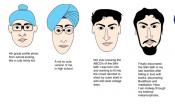It was Black History Month. I was working with children and youth in an after-school program in the Clarksdale housing projects in Louisville, Ky. Spike Lee's film Malcolm X had just been released. I sat around a table with a group of teenagers discussing Alex Haley’s Autobiography of Malcolm X and James Cone’s Martin & Malcolm & America.


